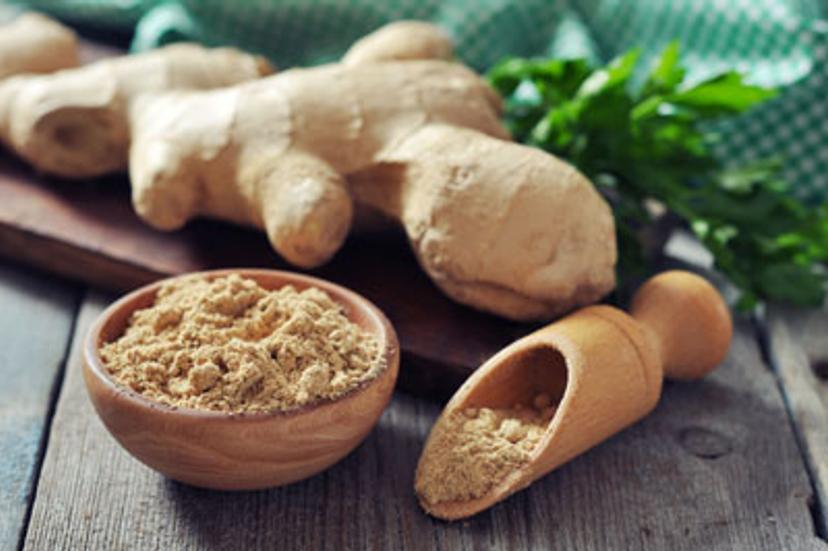How New Technology Helped Us Crack the Ginger Analysis Challenge
Discover how superficially porous particles HPLC columns have aided the development of a new ginger rhizome reference method to support quality control testing of the popular food supplement
8 Nov 2018

Herbal supplements remain a popular alternative medicine choice for people around the world, and global food agencies rely on approved reference methods to ensure their quality and safety. In this article, discover how Dr. Hong You and his team at Eurofins Supplement Analysis Center have developed an analysis method for ginger1, using Phenomenex Kinetex HPLC superficially porous particles column and ChromaDex certified reference materials.
Originating from Asia, ginger’s rhizome is used worldwide both for cooking and, increasingly, traditional medicine. According to the World Health Organization, the traditional and complementary medicine market continues to grow worldwide; and of the supplements in this market, ginger (Zingiber officinale) rhizome, is one of the best-selling – ranked ninth for herbal supplement sales in the USA in 2017.
A question of quality
Over the centuries, ginger has been used to treat a wide range of conditions including colds and flu, dyspepsia, flatulence and colic, migraine, nausea, rheumatic disorders, and vomiting. Early examples of the use of ginger as a dietary supplement can be seen as far back as Greek and Roman times, when it was wrapped in bread and used to treat digestive issues 2 .
Now, as use of its derivatives in modern dietary supplements rises, in order to maintain a high level of quality control, it is imperative that manufacturers and standards agencies have a robust method for analysis. Of all the bioactive ginger constituents, those most commonly found in modern dietary supplements — 6-paradol and zingerone — do not currently have an approved reference method. Those few ginger derivatives — such as gingerols and shogaols — which do have current validated and compendial methods, have long run times and low sensitivity, making them hard to use.
To combat this, Dr. Hong You, Director of Research and Development at Eurofins Supplement Analysis Center, and his R&D team have developed an efficient HPLC-UV/Vis method to analyze all major constituents of ginger, including 6-paradol and zingerone. The Eurofins Supplement Analysis Center is a subsidiary of Eurofins Scientific, Inc., with focuses on testing dietary supplements, botanical, and sport nutrition products.
Collaboration brings success

Dr. You is leading a team of senior scientists conducting analytical method development, optimization, and validation projects. The development of this method has benefited significantly from the use of Kinetex HPLC superficially porous particles column. According to Dr. You: “This new column technology allows us to be able to chromatographically resolve critical ginger constituents in a short run time and with low back pressure, without using expensive ultra-performance liquid chromatography and mass spectrometer.” He then went to on to explain that, “because this new method aims to be adopted by the dietary supplement industry as a widely used consensus method, this economical consideration is important.”
"As the principle investigator of this inter-company research study, I received tremendous support from our collaborators. Technical and budgetary support from column and consumables expert Phenomenex and reference material expert ChromaDex made the method development, troubleshooting, and validation processes smooth."
First of its kind
In an exciting turn of events, this ginger analytical method has been accepted and published by Talanta, a top respected peer-reviewed journal for analytical chemistry. This method is also the first method that meets all AOAC Standard Method Performance Requirements (SMPR) 2017.012 (Quantitation of Select Nonvolatile Ginger Constituents) and is being adopted as AOAC Official Method of Analysis (OMA) First Action. Therefore, the method has the potential to be used as a reference method for meeting FDA’s CGMP compliance for the manufacture and quality control of ginger-containing dietary supplements. This is a rewarding development for Dr. You and his team at the Eurofins Supplement Analysis Center.
“As a world leader in dietary supplement/botanical testing, Eurofins Supplement Analysis Center is proud to contribute to the testing community by sharing this robust analytical method with the public.”
For more information on this method, visit the published paper: Determination of bioactive nonvolatile ginger constituents in dietary supplements by a rapid and economic HPLC method: analytical method development and single-laboratory validation.
Reference:
1. You, H et al; Determination of bioactive nonvolatile ginger constituents in dietary supplements by a rapid and economic HPLC method: analytical method development and single-laboratory validation; https://doi.org/10.1016/j.talanta.2018.10.075
2. Kemper K. Ginger ( zingiber officinale ); Longwood Herbal Task Force and the Center for Holistic Pediatric Education and Research. 1999 Longwood Herbal Task Force

